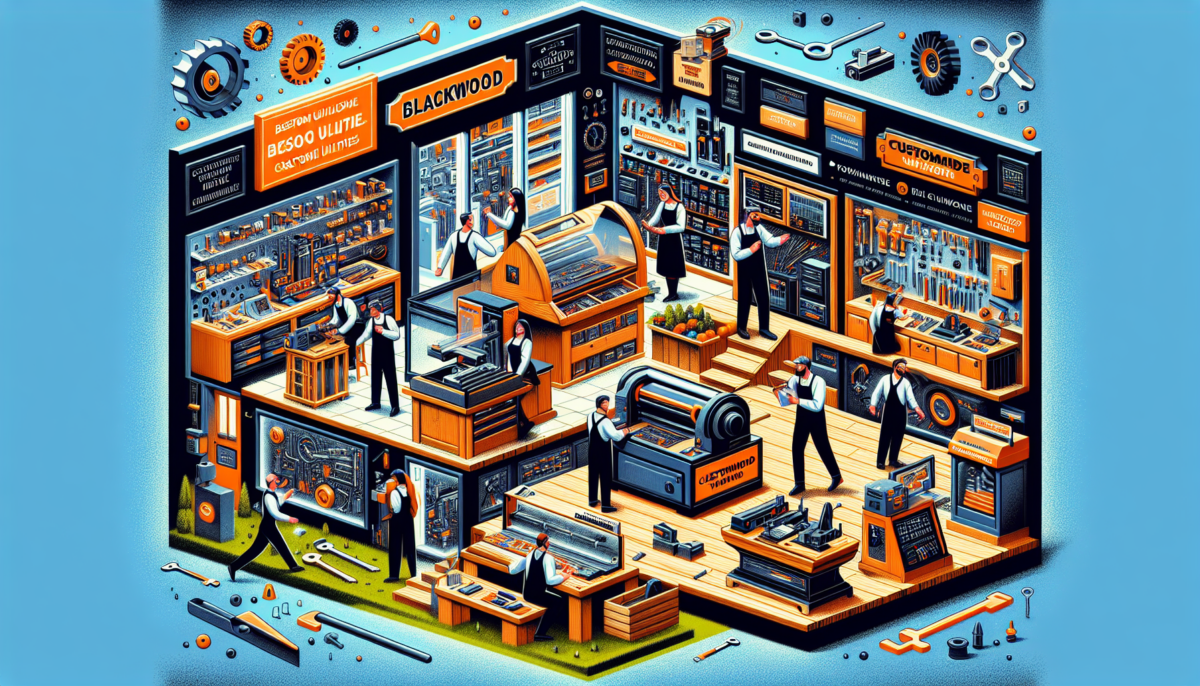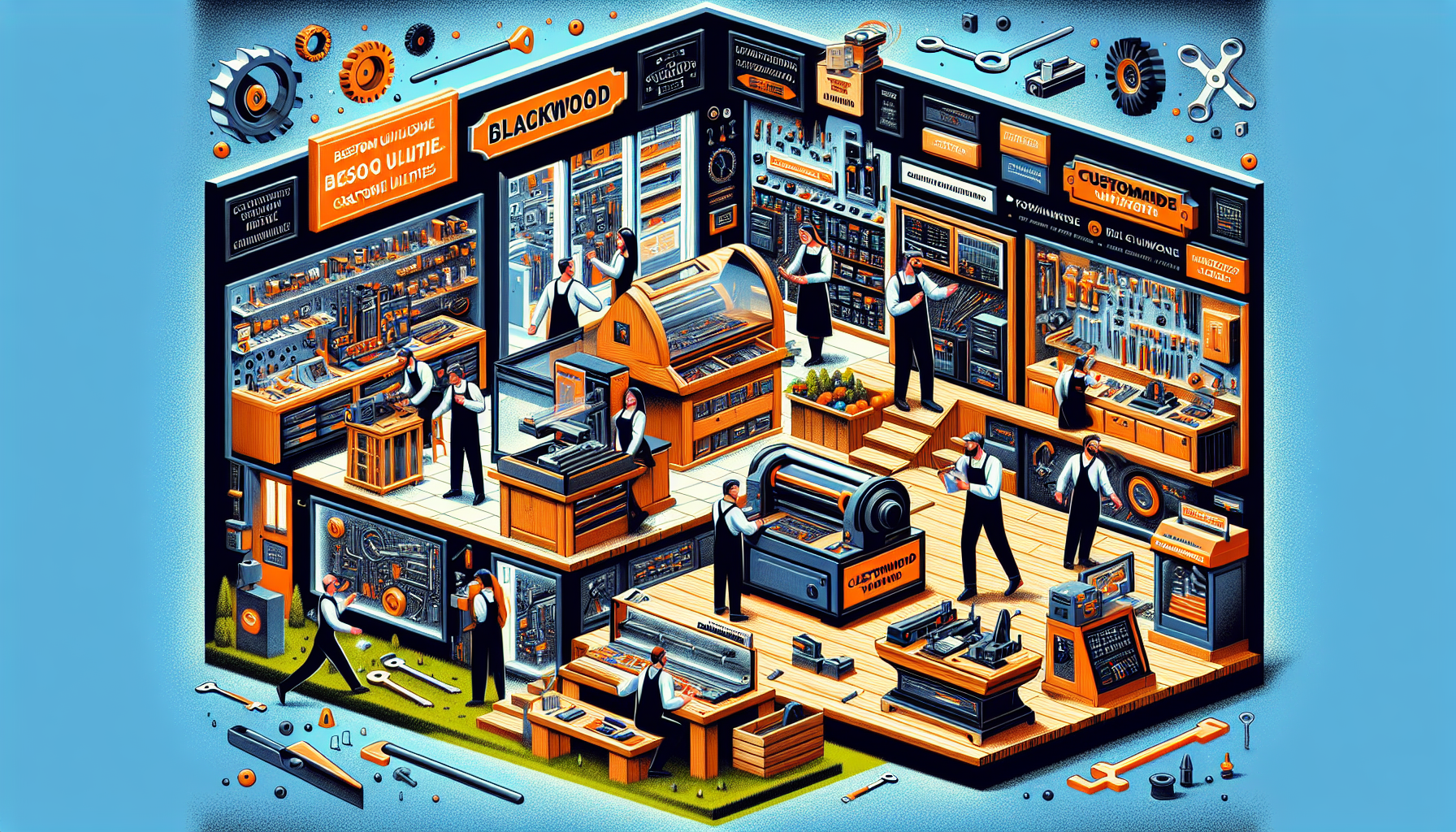Blackwoods Implements Customized Approach for Hardware Maintenance
We independently review everything we recommend. When you buy through our links, we may earn a commission which is paid directly to our Australia-based writers, editors, and support staff. Thank you for your support!

Blackwoods Implements Customized Approach for Hardware Maintenance
Quick Read
- Blackwoods, an Australian supplier of industrial and safety products, is managing the intricacies of hybrid computing settings.
- The organization is focusing on cloud transition while still making choices about keeping on-premises equipment.
- OEM maintenance is favored, yet third-party support is being evaluated for aging systems approaching their end-of-life.
- Increasing costs and security issues are shaping maintenance plans.
- The worldwide IT hardware market is projected to expand significantly, indicating ongoing demand for hardware upkeep.
Hybrid Computing Environments: The Balancing Challenge
As numerous Australian companies adapt to the changing dynamics of hybrid computing settings, industrial and safety supplies leader Blackwoods is leading this shift. The firm is continually deciding what to transfer to the cloud versus what to retain on-premises—a hurdle increasingly faced by IT executives across Australia.
Roberto Calero, the cloud operations manager, plays a crucial role in these important choices at Blackwoods. He recognizes that while cloud adoption is increasing, the company still needs to preserve certain on-premises hardware, especially regarding legacy systems.

Evaluating Maintenance Choices
Calero and his team assess hardware maintenance options individually. Although Original Equipment Manufacturer (OEM) maintenance is typically the initial choice, they also explore third-party maintenance services, especially for older systems nearing the end of life. Nonetheless, these decisions are intricate and require considering aspects like warranty voiding, geographical support availability, and the risks tied to reliance on a new support provider.
“Similar to many other organizations, we are increasingly investigating the cloud solutions,” Calero shared. “When examining the market, we don’t perceive a lack of traditional infrastructure resources, but there are definitely fewer than five or ten years ago. People are moving progressively to the cloud, and engineers are adapting their skill sets accordingly.”
Escalating Costs and Constrained Budgets
In the current economic climate, IT budgets are experiencing mounting pressure, and the escalating technology costs render maintenance choices even more vital. Ongoing inflation is another element contributing to the actual cost increase of maintaining on-premises systems. Calero and his colleagues are consistently assessing service alternatives to obtain the best value in a market where the expense of maintaining these systems is anticipated to keep climbing.
“If you’re faced with paying a premium for the expertise and resources, then the entire discussion of offshoring or turning to a Managed Service Provider (MSP) arises every single time,” Calero noted. “It hinges on the coverage and how essential that legacy data center infrastructure is for your organization.”
Security Issues in On-Premises Maintenance
A key component in the on-premises maintenance calculus is security. Numerous older systems may not comply with contemporary security protocols, posing a risk that must be evaluated against the expense of either maintaining or upgrading the equipment. “To secure services appropriately, it necessitates investment, not only from an infrastructure viewpoint but also from an application standpoint,” Calero stated. “However, the dilemma is, how do you justify the financial commitment to replace something that is still functioning, solely for the sake of security?”
Calero holds that security considerations are legitimate but ought to be reframed as a business risk dialogue instead of merely a technical concern.
Future Perspective: Increasing Need for Maintenance
These inquiries are likely to stay at the forefront for Australian IT leaders in the near term. According to Mordor Intelligence, the global IT hardware market is set to rise from US$130.86 billion in 2023 to US$191.03 billion by 2029. This growth indicates a continuous influx of hardware into data centers, all of which will require maintenance.
A recent report from Forbes pointed out that the OEM maintenance sector experienced a 4.59% increase from 2021 to 2022, with the third-party maintenance market valued at over US$2 billion in 2022. This highlights the persistent need for a well-rounded and strategic approach to hardware maintenance.
Summary
Blackwoods is managing a complex territory of hybrid computing settings, striking a balance between migrating systems to the cloud while ensuring the upkeep of on-premises hardware. With rising expenses and security challenges, the organization is employing a customized, case-by-case method to hardware maintenance, weighing the advantages and disadvantages of OEM versus third-party options. As the global IT hardware market grows, these choices will become increasingly crucial for Australian businesses.
Q&A
Q: What is driving Blackwoods’ focus on cloud adoption?
A:
Blackwoods, similar to various other firms, is emphasizing cloud adoption to maintain competitiveness and to take advantage of the flexibility, scalability, and cost benefits that cloud computing presents. Nonetheless, they still need to keep certain on-premises hardware, particularly for legacy systems.
Q: What elements influence Blackwoods’ selection of OEM or third-party maintenance?
A:
Blackwoods examines multiple factors, such as the age of the equipment, the potential risk of voiding warranties, geographic support coverage, and the likelihood of reliance on a new support provider. For older systems nearing their end-of-life, third-party maintenance may offer a more cost-effective solution.
Q: How do security concerns impact hardware maintenance choices?
A:
Security concerns play a crucial role in hardware maintenance decisions. Legacy equipment may not align with current security standards, creating a risk factor. Blackwoods must evaluate the costs of maintaining or replacing this equipment in relation to potential security threats.
Q: How is the rising cost of technology influencing Blackwoods’ maintenance strategies?
A:
The increasing expenses associated with technology, exacerbated by inflation and other variables, are raising the costs of maintaining on-premises systems. This compels Blackwoods to continually review service options to secure the best value and to ponder alternatives such as offshoring or utilizing Managed Service Providers (MSPs).
Q: What does the future hold for IT hardware maintenance in Australia?
A:
The global IT hardware market is forecasted to expand notably, leading to a persistent demand for hardware maintenance. Companies like Blackwoods in Australia will need to keep making strategic decisions to balance cost, security, and operational demands in this continually changing environment.
